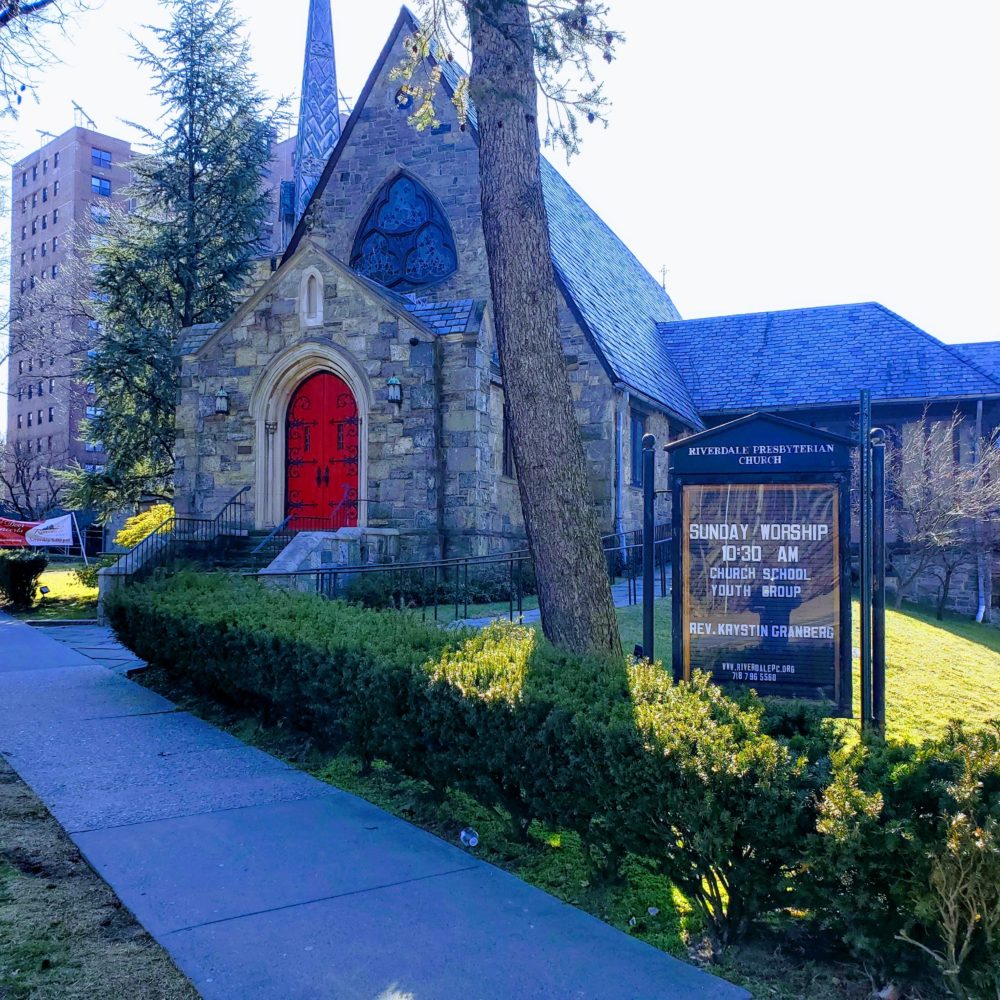Ringing of the Bells
Kelly Davis | kwd2111@columbia.edu

Just minutes before the Sunday morning service, Riverdale Presbyterian Church in the Bronx feels more like a mini social hour than a sanctuary. The gothic-inspired structure under a great dome is readying itself for the sermon.
On the right side of a vast altar sit dozen choir members, men and women, in long red gowns with white trimmings around their necks.
Riverdale Presbyterian, located at 4765 Henry Hudson Parkway, is a church diverse in both age and culture. On this Sunday morning, Blacks and Whites, Asians and Hispanics chat together in wooden pews that form a semi-circle around the great altar. A large loaf of bread and a goblet of wine are placed intentionally at the center of the altar, ready to be broken and eaten as a memorial to the body of Christ.
Between gaps of empty pews, huddles of three or four congregants, mostly women, whisper and chuckle quietly, with familiarity of old friends catching up.
“They better ring these bells soon,” a middle-aged woman mumbles under her breath to the man sitting next to her. “It is already 10:33 a.m.”
Churchgoers continue to speak amongst themselves for a few more minutes until a distinct, piercing sound fills the air, leading to a sudden change in the atmosphere.
Cling-cling. Pause. Cling-Cling. Pause. Cling-Cling.
The hand bells sound as though they are only a few feet away, but the bells and whoever rang them are out of sight. Some churchgoers bow their heads in solemn reverence, others simply look off into the distance.
The ringing continues for approximately 20 seconds.
A few moments later, Reverend Krystin Granberg stands and offers a warm greeting, followed by an organ playing the hymn, “Round about the Mountain.” The attendees listen quietly, before standing and reciting the “call to worship,” in a call and response format as Granberg takes her seat at the altar.
Granberg: Lord, open unto me
All: Open unto me— light for my darkness
After the scriptures are recited, the sermon is preached and the elements of the bread and wine are served, the service is over.
Cling-Cling. Pause. Cling-Cling. Pause. Cling-Cling.
Granberg stands from her seat at the altar, walks towards the center of the church and continues down the center aisle to stand by the entrance of the sanctuary.
A hymn called, “Fugue in F Major,” plays in the postlude, a final piece of music at the end of a service. The congregants observe the organist as his notes get higher and more powerful until a final elevated, beautiful chord holds for a breath as the church erupts in a rapturous applause.
Most members head down to the basement for their weekly coffee hour as the service concludes.
Granberg keeps her post at the door, greeting people as they exit. The church seems livelier than before with people smiling and laughing joyfully, a stark contrast from the hushed voices and solemn looks over the last hour and a half.
As is the practice at other Protestant churches, the ringing of the bells at Riverside Presbyterian symbolizes both the start and end of service. Many Christian traditions see the bell as a call to worship or prayer. This tradition of the ringing of bells is also seen in the Catholic church, meant as a signal that the mass is about to begin. It was at the moment when the bells rang that all the whispers in the sanctuary came to a pause and a solemness fell over the congregants, as though the bells were a conscious switch from fellowshipping with friends to a posture of worship and prayer.
